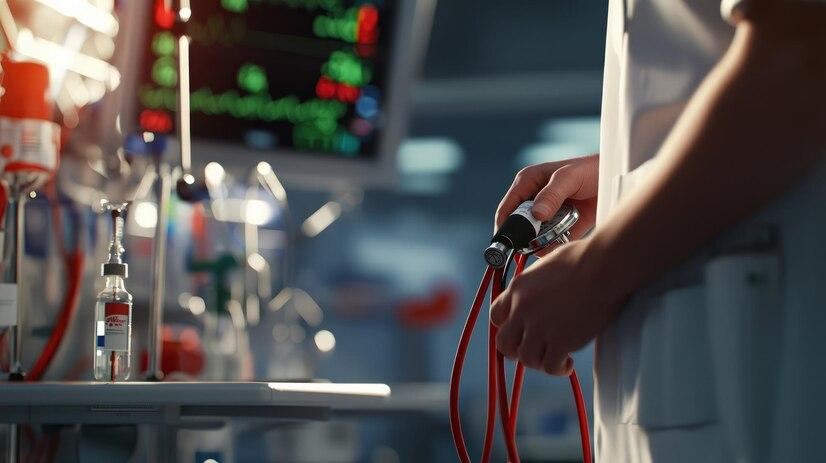The Growing Market for Perfusion Systems in Medical Devices

Perfusion – Delivering Life-Saving Treatments
Perfusion refers to the passage of fluid through the circulatory system or other body passages such as lymphatics. Perfusion systems are medical devices that are used to circulate or perfuse fluids through an organ or tissue in order to maintain its viability outside the body or to preserve it for transplantation. While perfusion techniques have been used in medicine for decades, advances in technology have enabled the development of more sophisticated organ they that are expanding clinical applications and driving market growth.
Preserving Organs for Transplantation
One of the major uses of Perfusion System is in organ transplantation. After being surgically removed from a donor, organs like hearts, lungs and livers must be preserved until they can be transplanted into a recipient. Without preservation, the organs will deteriorate and become unusable within a matter of hours. Traditional static cold storage preservation methods only provide limited preservation time of up to 12 hours for the heart, 6-8 hours for the liver, and 4-6 hours for the lungs.
Newer ex-vivo organ perfusion systems aim to extend preservation times by replicating in-vivo conditions outside the body through oxygenated perfusion and temperature control. For example, devices that perfuse donor lungs with an oxygenated solution at normothermic body temperatures have enabled lung preservation times of over 24 hours. This has significantly increased the usage of marginal donor lungs that were previously discarded due to distant locations or transportation delays. Perfusion has also demonstrated the potential to evaluate and improve the function of marginal organs prior to transplantation through reconditioning therapies.
Cell and Tissue Applications
In addition to whole organs, perfusion systems are being used to preserve and transport other tissues, as well as to culture and expand cells outside the body. Temporary extracellular matrices created by perfusion bioreactors support the growth of engineered tissues like cartilage, bone and blood vessels. Perfused devices can provide tissue constructs with essential nutrients, oxygen, growth factors and mechanical stimuli to mature. Perfusion bioreactors are also being developed to efficiently produce large quantities of cells like stem cells, cardiomyocytes and hepatocytes for research and potential therapeutic applications. The ability to precisely control conditions in perfusion systems offers advantages over traditional static culture methods.
Cardiopulmonary Bypass Machines
One of the earliest and most established medical uses of perfusion is in cardiopulmonary bypass, also known as "heart-lung machines", which temporarily take over the functions of the heart and lungs during cardiac surgery. By diverting blood from the veins and pumping it through an oxygenator before returning it to the arteries, the heart can be isolated from the systemic circulation, allowing surgeons to operate on a still heart. Advancements in pump, oxygenator and temperature regulation technologies have enabled safer and longer on-pump surgical procedures like coronary artery bypass grafting and heart valve replacements. Today, over 1.25 million cardiac bypass surgeries are performed annually worldwide using cardiopulmonary bypass systems.
Expanding into New Therapeutic Areas
Perfusion systems are also being investigated for new therapeutic applications. For example, extracorporeal membrane oxygenation (ECMO) systems employ similar technologies as cardiopulmonary bypass machines, but are used to provide longer term respiratory and circulatory support for patients, such as neonates suffering from respiratory failure. ECMO has demonstrated improved outcomes compared to conventional ventilator therapy alone. Venovenous ECMO is now commonly used to support lung recovery, while venoarterial ECMO can partially or completely replace heart function.
Research is also exploring the potential for perfusion to enhance other organ functions. Hepatic assist devices aim to treat acute liver failure by removing and perfusing a patient's blood through an artificial liver extracorporeally. Though current systems focus on toxin removal, future iterations incorporating engineered liver tissues may provide metabolic support. Renal replacement therapies like hemodialysis already use blood purification strategies similar to perfusion to replace kidney filtration in patients with renal failure. New perfusion technologies bring the promise to expand such organ support therapies in the future.
Market Drivers and Outlook
As the clinical utility of organ perfusion expands, global demand for perfusion systems and technologies continues to rise across both transplant and therapeutic areas. The large and growing populations of patients suffering from end-stage organ failure present a major clinical driver. The global organ transplantation market alone is expected to reach $18 billion by 2026, according to a recent report. Organ preservation also enables greater utilization of donor organs through increased sharing and transportation. Favorable regulatory frameworks and reimbursement policies further support commercial adoption. While North America and Western Europe currently dominate the market, emerging regions in Asia Pacific and Latin America are projected to fuel double-digit annual growth rates through 2030. As innovative new applications emerge, continued investments in perfusion R&D ensure this critical life-saving field will continue to advance and transform transplant medicine and critical care therapies in the years to come.
Get more insights: Perfusion Systems
For More Insights Discover the Report In language that Resonates with you
About Author:
Ravina Pandya, Content Writer, has a strong foothold in the market research industry. She specializes in writing well-researched articles from different industries, including food and beverages, information and technology, healthcare, chemical and materials, etc. (https://www.linkedin.com/in/ravina-pandya-1a3984191)
- Art
- Causes
- Crafts
- Dance
- Drinks
- Film
- Fitness
- Food
- Spiele
- Gardening
- Health
- Startseite
- Literature
- Music
- Networking
- Andere
- Party
- Religion
- Shopping
- Sports
- Theater
- Wellness
- IT, Cloud, Software and Technology


